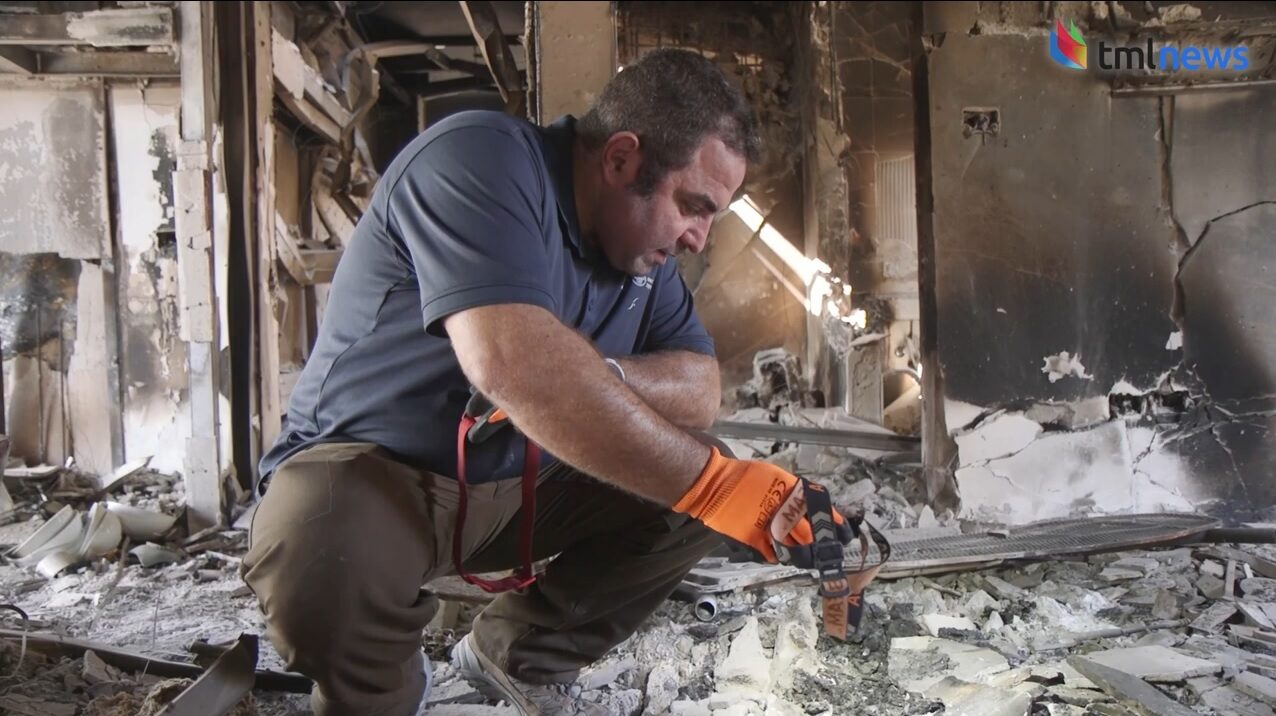Not a Normal Dig: Israeli Archaeologists Use Skills To ID Hamas Massacre Victims
Expertise in archaeology becomes crucial in the aftermath of violence in southern Israel
The Hamas massacre of October 7 was the worst, most atrocious genocidal attack against Jews since the Holocaust—not only because of the sheer number of victims but also because of the state of the bodies left behind.
Hundreds of corpses were beyond recognition in the wake of Hamas’ brutality. For this reason, the Israel Antiquities Authority (IAA) was called upon—sadly—to serve as experts with a uniquely qualified skillset.
We have a ton of burnt houses … missing people … and no one knows how to proceed
According to the press release, IAA Director Eli Escusido said that Col. Yossi Cohen of the Israel Defense Forces (IDF) Gaza Division called him with “a serious problem.”
“He said, ‘Listen, we have a ton of burnt houses … missing people … and no one knows how to proceed. We’re stuck.’ So, we immediately gathered some 15 archaeologists who volunteered to help.”
The job is very much like detective work … only whereas normally we look at scenes from thousands of years ago, here it has been only a few weeks
Among the volunteers for this nightmarish mission is Professor Amir Golani, Senior Research Archaeologist at the IAA, who told The Media Line in an interview that they “didn’t really know at first what we were going to be doing … but after we got there, it became clear that we were going to help identify human remains of victims killed on October 7.”
According to Golani, “The job is very much like detective work … only whereas normally we look at scenes from thousands of years ago, here it has been only a few weeks.” Golani added that the stakes are also much, much higher.
“Many of the people who are missing cannot be identified yet, meaning we know someone is missing but we don’t know if that person is alive or not,” explained Golani.
And until such answers are provided, thousands of victims’ family members are left in a tragic state of limbo regarding the fates of their loved ones.
“For the families of people who are ‘missing’ … to know that that person is definitively identified in the remains is extremely important because then there’s a certain closure,” Golani said.
Unfortunately, as Golani explained, there’s very little evidence to go on. “Most of the remains are burned to a state that makes their identification difficult at best,” particularly as the archaeologists are dealing with remains that could neither be found nor identified by forensic experts, first responders, or other expert organizations.
As for what the archaeologists do find—evidence is largely limited to bits of bone, teeth, certain kinds of implants, and personal items that the victims would be expected to have on them.
In one example released to the press, IAA archaeologist Assaf Peretz pointed to a carpet with remnants of a victim’s blood that will be collected for DNA analysis.
“And in this respect,” Golani continued, “I can say that we’ve been able to reach an identity in no small number of cases.”
In some cases, among the Israeli victims of Hamas’ atrocities, experts have even found dead terrorists together with their weapons.
Asked how he deals with the horrific sights, Golani explained that normally he sees things in a pastoral environment and from a distanced perspective. He looks at things “from thousands of years ago. I don’t know the person … and we try to understand it in the best way we can.”
Believe me, what we’ve heard and what I’ve seen with my own eyes—it’s true, unfortunately
“Here it’s different,” he continued, his voice betraying his demeanor with a subtle tremble. “You come to a place and see the destruction, and it’s real. You can feel it as if it were your home. You identify things. ‘Here are the remains of a TV … this was a kitchen …’ and you understand exactly what atrocities unfolded [there]. Believe me, what we’ve heard and what I’ve seen with my own eyes—it’s true, unfortunately.”
On October 7, thousands of Hamas terrorists from Gaza infiltrated southern Israeli communities as well as the Nova music festival near Kibbutz Re’im in a highly coordinated and long-planned attack. In the span of just a few hours, Hamas kidnapped over 240 people (as of last count) and butchered more than 1,400 (mostly civilian) men, women, children, and elderly.
People were shot, raped, beheaded, and tortured; they had limbs hacked off and were even burned alive. Much of the attack was caught on camera by the terrorists themselves who reveled in the savagery. Many wore GoPro body cameras and used their cellphones to broadcast the murderous rampage live on social media. In select incidents, they filmed their barbarity on their victims’ own smartphones in order to psychologically torture their families who watched helplessly from afar.
According to the IAA, archaeologists have searched and sifted through remains of burned homes and storage rooms in the Be’eri, Kissufim, Nir Oz, and Kfar Aza kibbutzim. They have also searched and sifted through burned-out cars from the Nova festival. So far, the evidence they have uncovered has led to the discovery of dozens of victims and the identification of at least ten. Among them are men, women, and children who until now were thought to be missing.
But the work is far from over.


